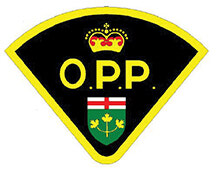Tikinagan Child & Family Services launches anti-bullying program
Reeti Meenakshi Rohilla - Staff Writer
Tikinagan Child & Family Services launched an anti-bullying program in more than 30 First Nation communities on October 19. It’s a component of Mamow Oshki Pimagihowin, Tikinagan’s prevention program. Tikinagan Associate Executive Director Rachel Tinney explained that the Mamow Oshki Pimagihowin framework is about working together to learn new life skills. The organization has joined forces with Nishnawbe Aski Police Service (NAPS), the Ontario Provincial Police (OPP), the Sioux Lookout First Nations Health Authority (SLFNHA), and Nishnawbe Aski Nation (NAN) to raise awareness about the devastating effects of bullying and cyberbullying on children and youth.
Tinney shared in a news release issued by Tikinagan, “Bullying and cyberbullying is an issue in our communities that has affected our children and youth for too long. It is time to come together, to work together, to teach our next generation how to treat each other right and fair. This unified message, supported by our community partners, shows that everyone who has the best interest of our children and youth are here to support them, keep them safe, provide resources, and be an ally. Everyone deserves a safe space - whether it’d be online, in school, or at home — and the right to feel supported.
“We believe the answer lies within the community. That is why we are looking to our children and youth to be the answer and be empowered to make the change in their own communities.”
Tikinagan has created a resource guide for service workers, educators, and other community professionals, explaining the affects of bullying and cyberbullying on children and youth, and what people of all ages can do to prevent this behavior.
It states that kids who bully use their power, such as physical strength, access to embarrassing information, or popularity, with the intent to control or harm others. Bullying involves a real or perceived power imbalance, which can change over time in different situations, even if they involve the same people. The resource guide adds that bullying can include making threats, spreading rumors, attacking someone physically and verbally, and deliberately excluding someone from a group or activity.
According to Tikinagan’s news release, in addition to working with the community partners, Tikinagan is also collaborating with schools in each community to reinforce the role that educators have in preventing bullying, and supporting children who are victims of bullying behaviors. It mentions that the anti-bullying campaign will include a two-part contest, targeting First Nation children and youth from Grades 1 to 12.
Tikinagan shared, “The first part of the contest will invite children and youth to submit a name/slogan for the anti-bullying and anti-cyberbullying campaign. The deadline for submissions is October 30. The second part of the contest will invite children and youth to submit a logo for the campaign to compliment the winning slogan. Each contest will be judged by a panel of First Nation youth. Once the slogan and logo have been decided, Tikinagan and its partners will embark upon a round of educational activities in schools and communities to raise awareness about bullying and anti-bullying and the role and responsibility of all community members in prevention of bullying.”
Additional resources, contest cards and rules, and updates on the campaign can be found at www.tikinagan.org.
According to Tikinagan Child & Family Services’ website, it is a community-based child and family well-being agency that is rooted in and accountable to the First Nations communities that they serve.
Candi Edwards, Sioux Lookout First Nations Health Authority Manager of Raising Our Children, stated in Tikinagan’s news release, “Raising our Children is an approach to ensuring the children and families in the communities are supported, and children are being raised with strong connections to family, community, spirituality, land, culture, language, and each other.” She added, “Resources and campaigns such as this one provide youth with the tools they need in order to build healthy relationships, and will help put an end to the bullying and lateral violence that is so prevalent in our communities.”
Tinney concluded, "Bullying impacts the psychological, emotional, physical, and social aspects of a child’s life. By working together with our partners who are based in the First Nation communities, we are sending a message to children and adults that we care about them. It also shows that there is no place for bullying in our communities. Most importantly, we are putting the solution in their hands.”


